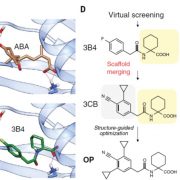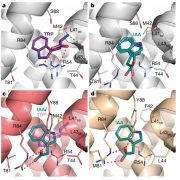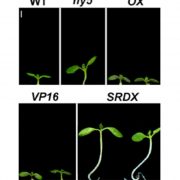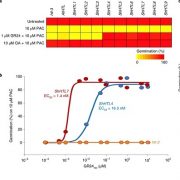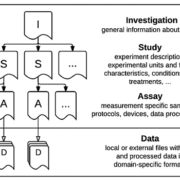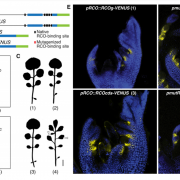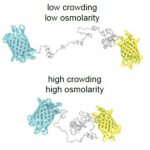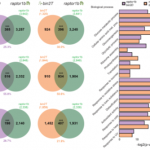Differential biosynthesis and cellular permeability explain longitudinal gibberellin gradients in growing roots (PNAS)
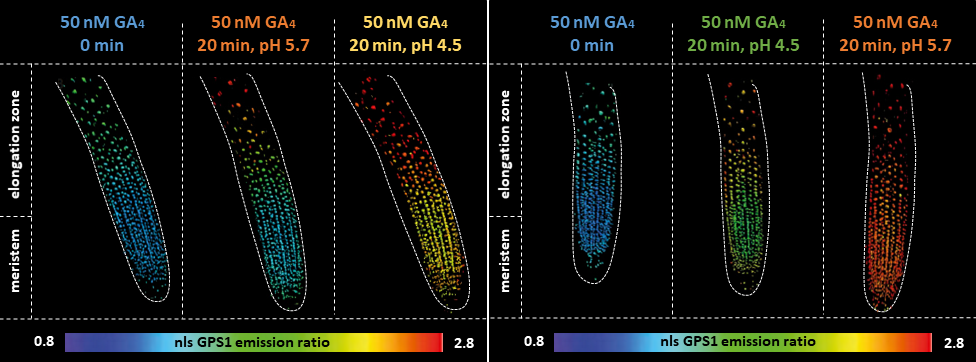 Gibberellin (GA) controls multiple developmental processes throughout the plant life cycle, from seed germination to flowering. In Arabidopsis, GA also regulates division of meristematic cells at the tip of the root and cell elongation in the growing zone. Despite its importance, little is known about the events that generate the GA gradient that drives growth patterning in below-ground organs. In a previous report, Rizza and coworkers employed a nuclear-localized Gibberellin Perception Sensor (nlsGPS1) to map the GA gradient in vivo and found a positive correlation between GA accumulation and cell length in roots (e.g., low GA levels in meristematic cells and high GA levels in elongating cells). In this paper, the authors combined mathematical modeling and live-imaging techniques to monitor GA distribution in different genetic backgrounds, including GA-deficient mutants. The longitudinal gradient of endogenous GA in developing roots mirrored differential GA production, which is related to higher abundance of the precursor GA12 and expression of GA biosynthetic genes in the elongation zone. On the other hand, the gradient generated by exogenous GA reflected differential cellular permeability, which is lower in meristematic cells and higher in elongating cells. Interestingly, pH alteration modified the distribution of exogenous GA – with faster GA accumulation in the elongation zone at pH 5.7 but in the meristematic zone at pH 4.5 – suggesting a correlation between cell elongation and apoplast acidification along the growing root. (Summary and image adaptation by Michela Osnato @michela_osnato). Proc. Natl. Acad. Sci. USA 10.1073/pnas.1921960118
Gibberellin (GA) controls multiple developmental processes throughout the plant life cycle, from seed germination to flowering. In Arabidopsis, GA also regulates division of meristematic cells at the tip of the root and cell elongation in the growing zone. Despite its importance, little is known about the events that generate the GA gradient that drives growth patterning in below-ground organs. In a previous report, Rizza and coworkers employed a nuclear-localized Gibberellin Perception Sensor (nlsGPS1) to map the GA gradient in vivo and found a positive correlation between GA accumulation and cell length in roots (e.g., low GA levels in meristematic cells and high GA levels in elongating cells). In this paper, the authors combined mathematical modeling and live-imaging techniques to monitor GA distribution in different genetic backgrounds, including GA-deficient mutants. The longitudinal gradient of endogenous GA in developing roots mirrored differential GA production, which is related to higher abundance of the precursor GA12 and expression of GA biosynthetic genes in the elongation zone. On the other hand, the gradient generated by exogenous GA reflected differential cellular permeability, which is lower in meristematic cells and higher in elongating cells. Interestingly, pH alteration modified the distribution of exogenous GA – with faster GA accumulation in the elongation zone at pH 5.7 but in the meristematic zone at pH 4.5 – suggesting a correlation between cell elongation and apoplast acidification along the growing root. (Summary and image adaptation by Michela Osnato @michela_osnato). Proc. Natl. Acad. Sci. USA 10.1073/pnas.1921960118


